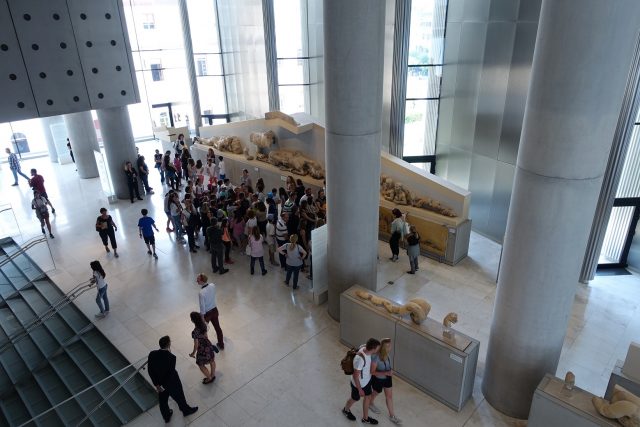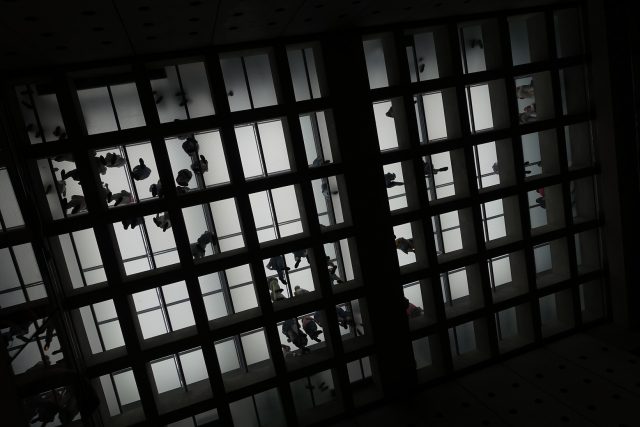How does Brexit affect the Elgin marbles issue?
Here is why, after the Brexit, the British Museum should return the Elgin marbles to the culture they belong to.
“We, the Europeans, will have to take our fate into our own hands. Our friendship with the US, the UK, our neighbourly relationship with Russia and also with other countries count, of course. But we must know, we have to fight for our own future,” claimed Germany’s chancellor Angela Merkel on May 2017, at NATO and G7 summit in Taormina (Sicily) addressing also the so called Elgin marbles. And she added: “the times in which we could completely depend on others are on the way out”. That is, Europe will soon need to be able to speak with a single and convincing voice. Times are changing day by day. It is clear that being a politically fragmented territory, with troubled independent governments and not integrated military forces is no longer a sustainable condition for the EU members, who have outsourced their defence to United States for too long.

Acropolis Museum, Athens. Ph. Conceptual Fine Arts.
A forward to the Elgin marbles issue.
If they don’t want to succumb to the growing power of the super powers now it’s time to start thinking differently – and, for instance, finally stop competing at the Olympic games against China, US or Russia as single nations. More than 70 years after the end of the WWII it doesn’t make sense anymore. “The same thing that makes you live, can kill you in the end” (Neil Young, from Hank to Hendrix, Harvest Moon, 1992). In regards with the Elgin marbles issue, do you remember what newspaper editor claims in Kurt Vonnegut’s Bluebeard when advising the New York-based cartoons drawer Rabo Karabekian who wants to move to Europe to become a real artist? The journalist tells him what has been a sad truth for too long: “If the cities are still standing when you get to Europe,” he said, “and you sit in a cafe for hours, sipping coffee or wine or beer, and discussing painting and music and literature, just remember that the Europeans around you, who you think are so much more civilised than Americans, are looking forward to just one thing: the time when it will become legal to kill each other and knock everything down again”.

Acropolis Museum, Athens. Ph. Conceptual Fine Arts.
As brilliantly proved by a recent well-documented study about European defence policies – a study whose only weakness is to be available only in Italian (Loreno Pecchi and Gustavo Pica, Difendere L’Europa, 2017) -, at this point it’s essential for the European countries to be able to rely on a unified, integrated and more efficient army. While US has recently presided in Saudi Arabia over the single largest US arms deal in American history, worth 110 billion dollars over the next decade and including ships, tanks and anti-missile systems, if EU wants the Elgin marbles back still has to cope with the problem of having something like 154 different kind of weapons systems – while US has only 27 – or 37 kind of armoured vehicles (only 9 in the US). It means that even if EU’s 27 countries are spending together roughly 220 billions dollars (while US is spending 600 billion, China 214 and Russia only 99), their military power is considerably less efficient than that of its global competitors.

Acropolis Museum, Athens. Ph. Conceptual Fine Arts.
Nevertheless, we agree with Umberto Eco that this is only half of the problem, and not the main one. The other half is culture. In January 2012, interviewed by Gianni Riotta for the The Guardian, Eco stated: “we must remember that it is culture, not war, that cements our European identity. The French, the Italians, the Germans, the Spanish and the English have spent centuries killing each other. Today, we’ve been at peace for 70 years and no one realises how amazing that is any more. Indeed, the very idea of a war between Spain and France, or Italy and Germany, provokes hilarity. The United States needed a civil war to unite properly. I hope that culture and the European market will do the same for us”. And on the top of it the UK chose to Brexit.
The Elgin marbles issue.
This long premise is intended to support a position that we instinctively took while we were in Athens attending Art Athina and visiting the Greek part of Documenta 14 – a position that our interview with Rietberg Museum Director Albert Lutz has reinforced. We had a great art-time there, we met extremely welcoming people, and of course we also paid a visit to the relatively new outstanding Acropolis Museum, that as a matter of fact it’s a true masterpiece of museum architecture every European citizen should see at least once in their lifetime. The aforementioned position concerns the sculptures of the Parthenon acquired by Lord Elgin between 1799 and 1810 from the Ottoman Empire, which was dominating the Greeks at that time keeping the Acropolis as a military fort. Since it became independent Greece is asking back this group of sculptures – the Elgin marbles. Elgin stated that he had obtained from the Sultan a firman to allow his artists access to the site, but was unable to produce the original documentation. The British Museum, of which these sculptures are the main attraction, preserves a document claimed to be an English translation of an Italian copy made at the time – needless to say that the authenticity of this document has been questioned. Lord Byron himself denounced Elgin as a vandal: “Dull is the eye that will not weep to see/ Thy walls defaced, thy mouldering shrines removed/ By British hands, which it had best behoved/ To guard those relics ne’er to be restored./ Curst be the hour when from their isle they roved,/ And once again thy hapless bosom gored,/ And snatch’d thy shrinking gods to northern climes abhorred!” (Child Harlod’s Pilgrimage, 1818). On the British Museum web site these pieces are still called the “Elgin marbles”.

“The Acropolis of Athens” (1805) watercolour by Simone Pomardi. On show at “The rediscovery of the ancient” (Rome, Foro Romano, Curia Iulia, until February 23) © 2013 The Packard Humanities Institute.
Greece officially started reclaiming the Elgin marbles as essential part of the European cultural heritage in 1982, but the British Museum’s trustees, owning the marbles since Elgin sold them to the museum, have been refusing the request for restitution – despite UNESCO itself is supporting Greece. At the moment there are 26 committees in support of the restitution of the Elgin marbles, all over the world. Their main argument is that these sculptures belong to the Parthenon, and the Parthenon belongs to the world’s artistic heritage. Last February in Florence, Lydia Koniordou, the Greek Minister of Sports and Culture, officially renewed its country request, saying that “The Greek government will go on asking the reunification of this unique symbol, which is representing democracy, freedom of speech, tolerance. We should return to The Parthenon its entirety, for entirety is important for the works of art and we will do our best to find a fair solution”. We are with her, and hopefully Europe too.
November 25, 2020
